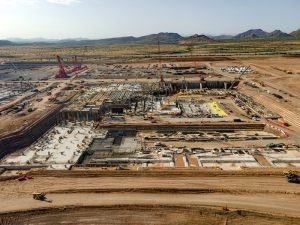You’ve heard of the Republican tax bill at this point. But you may be wondering what taxes have to do with the energy world. Quite a lot, actually.
Both the House and Senate put forth tax bills. Eventually (most likely before the end of the year), the two will be meshed together to create the final bill that makes its way to the President’s desk.
The House’s tax bill
is currently causing a whole bunch of commotion for renewable energy proponents, especially in terms of what it means for the wind industry.If signed into law, forecasts for the number of gigawatts expected to come online would be cut by half, Bloomberg News Energy Finance wind analyst Alex Morgan told me for the Denver Post. The 38 gigawatts currently forecast to come online through 2020 would shrink to 19 gigawatts or 20 gigawatts. (A gigawatt of power can provide energy for about 700,000 homes.)
The reason is a bit complicated.
Tax credits: gone with the wind?
Currently, the wind industry has a Production Tax Credit, or PTC. Started in 1992, it’s a 10-year credit that kicks in once a wind project comes online. In 2015, there was a bipartisan move to slowly bring an end to the credit, which was supported by the wind industry.
Construction projects were still eligible for the full 100 percent credit if they qualified in 2016. But once the year ended, the credits started phasing out. Projects in 2017 received 80 percent of the credit, dropping to 60 percent in 2018 and 40 percent in 2019. The credit disappears in 2020.
Companies could ensure their projects qualified for the full credit by either starting construction or by spending 5 percent of the end total construction costs before the first deadline. (One caveat: The project must be finished in four years.) Many companies took the 5 percent route, typically buying wind turbines and storing them.
But the House bill retroactively changes the rules of the game, the wind industry says. Projects that chose the 5 percent route no longer qualify. That means all the projects that put in last-minute orders for turbines at the end of 2016 (there were a lot) no longer qualify for the full 100 percent credit.
The best they could hope for is the 2017 credit limit. That is if they can get the construction project going in time.
Additionally, the value of the credit dropped. Instead of the current inflation-adjusted $24 per megawatt hour, projects would be working with a $15 per megawatt hour credit.
Another fear is that the House bill requires construction to be continuous, which is interpreted to mean no pauses.
The wind industry crosses its fingers
The Joint Committee on Taxation says the House’s measure would save $12.3 billion over the next nine years.
The Senate bill keeps the tax credits as they are, which is a bit of a relief for the industry. Additionally, many think the final version of the bill will include the PTC. But its fate is still uncertain, which has led to a chilling effect in the industry.
What does that mean for an energy or business reporter?
How are your local wind companies handling this? Do you have local projects that are currently up in the air? Are projects stalling or are they rushing to meet the 2017 credit limit? Are jobs on shaky ground? Are people worried about their future?
When the final version of the tax bill does come out, make sure to check in on the PTC. A reaction story could be a short or an in-depth piece, depending on how it goes.










